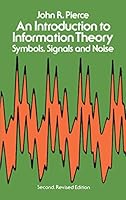
## Metadata
- Author: [[John R. Pierce]]
- Full Title: An Introduction to Information Theory
- Category: #books
## Highlights
- How can we describe or classify theories? We can say that a theory is very narrow or very general in its scope. We can also distinguish theories as to whether they are strongly physical or strongly mathematical. Theories are strongly physical when they describe very completely some range of physical phenomena, which in practice is always limited. Theories become more mathematical or abstract when they deal with an idealized class of phenomena or with only certain aspects of phenomena. Newton’s laws are strongly physical in that they afford a complete description of mechanical phenomena such as the motions of the planets or the behavior of a pendulum. Network theory is more toward the mathematical or abstract side in that it is useful in dealing with a variety of idealized physical phenomena. Arithmetic is very mathematical and abstract; it is equally at home with one particular property of many sorts of physical entities, with numbers of dogs, numbers of men, and (if we remember that electrons are indistinguishable) with numbers of electrons. It is even useful in reckoning numbers of days. In these terms, communication theory is both very strongly mathematical and quite general. Although communication theory grew out of the study of electrical communication, it attacks problems in a very abstract and general way. It provides, in the bit, a universal measure of amount of information in terms of choice or uncertainty. Specifying or learning the choice between two equally probable alternatives, which might be messages or numbers to be transmitted, involves one bit of information. Communication theory tells us how many bits of information can be sent per second over perfect and imperfect communication channels in terms of rather abstract descriptions of the properties of these channels. Communication theory tells us how to measure the rate at which a message source, such as a speaker or a writer, generates information. Communication theory tells us how to represent, or encode, messages from a particular message source efficiently for transmission over a particular sort of channel, such as an electrical circuit, and it tells us when we can avoid errors in transmission. ([Location 230](https://readwise.io/to_kindle?action=open&asin=B008TVLR0O&location=230))